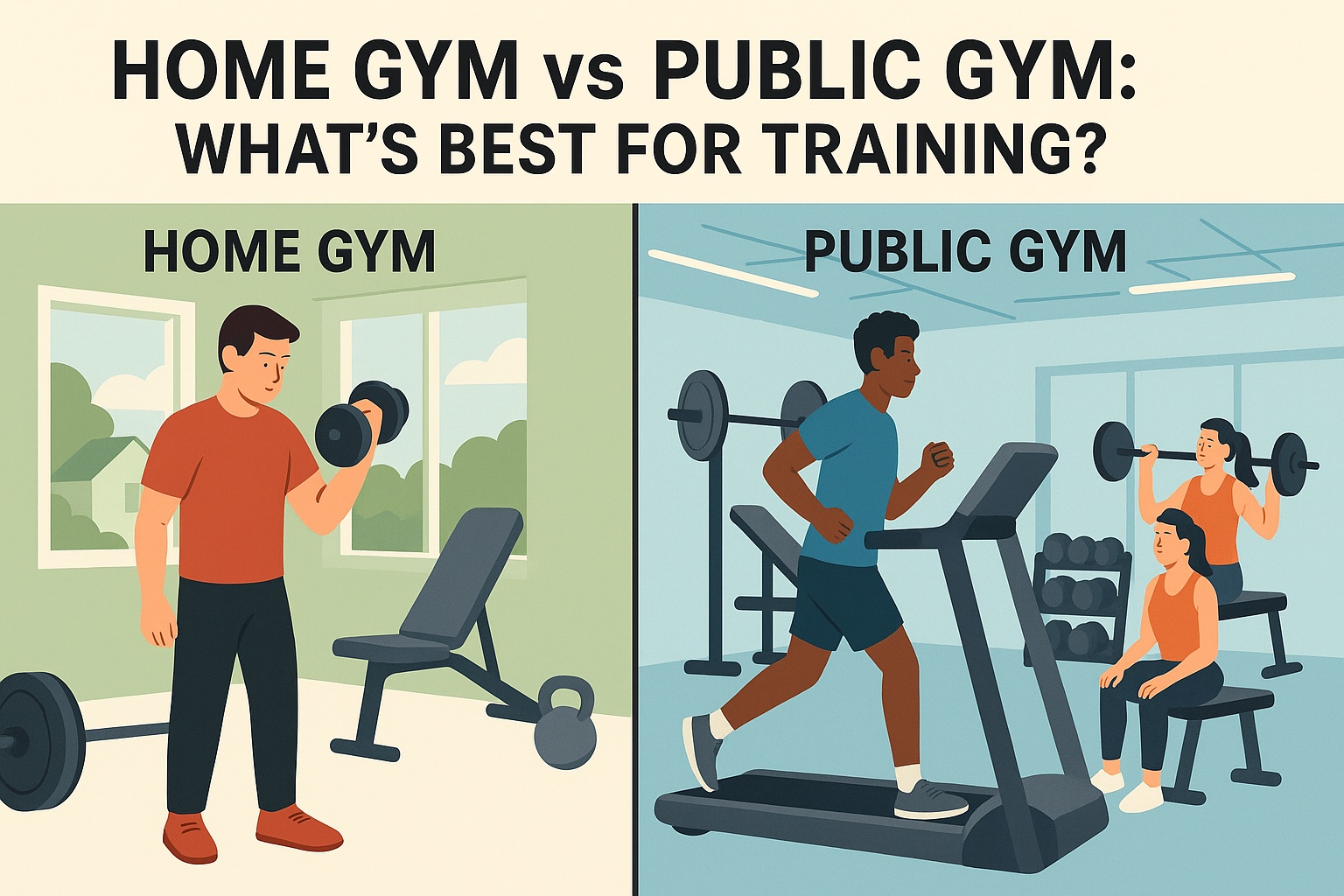Home Gym vs Public Gym: Which One Suits Your Fitness Goals?
Choosing between a home gym vs public gym can dramatically impact your consistency, results, and motivation. While public gyms offer variety and community, home gyms bring unmatched convenience. In 2025, with more Americans investing in personal fitness, the debate is more relevant than ever. Let’s break down the pros, cons, and key differences to help you make the best choice for your lifestyle and goals.
Key Factors to Consider When Choosing a Gym Setup
- Cost: Equipment investment vs monthly membership
- Convenience: Travel time vs 24/7 access
- Equipment variety: Full range at public gyms vs basic at home
- Motivation: Alone at home vs social energy in public
- Cleanliness: Your rules at home vs shared space at the gym
Benefits of Training at a Home Gym
A home gym offers full control of your environment and schedule. Here’s why more people are building their own fitness spaces:
- Train anytime—no commute, no wait times
- Save money over time after the initial equipment cost
- Customize space with your favorite gear and music
- Enjoy complete privacy and comfort
- Eliminate distractions and time limits
If you value flexibility and control, a home gym may be your best bet in the home gym vs public gym debate.
Drawbacks of Home Gym Training
However, training at home isn’t perfect. Potential downsides include:
- Upfront costs for equipment can be high
- Limited space and fewer machines or weights
- Lack of spotters or supervision for heavy lifts
- Possible distractions from family, phone, or chores
- Harder to stay motivated without outside accountability
Advantages of Training at a Public Gym
Public gyms provide structure, energy, and a professional environment. Benefits include:
- Access to a wide variety of machines and weights
- Professional trainers and group classes
- Motivational atmosphere with like-minded people
- Ideal for social interaction and goal sharing
- No need for home storage or maintenance
For those who thrive in community or want expert guidance, public gyms remain a powerful option in the home gym vs public gym discussion.
Potential Downsides of Public Gyms
- Monthly fees add up over time
- Travel time and limited hours may hinder consistency
- Waiting for equipment during peak hours
- Risk of exposure to germs or poor hygiene
- Intimidation or discomfort in crowded spaces
Home Gym vs Public Gym: Side-by-Side Comparison
| Feature | Home Gym | Public Gym |
|---|---|---|
| Cost (long-term) | Lower | Higher |
| Convenience | High (at home) | Moderate (commute) |
| Equipment Variety | Limited | Extensive |
| Motivation | Self-driven | Group energy |
| Privacy | High | Low |
| Social Engagement | Minimal | High |
Which Option Fits Your Training Style?
The choice depends on your personality, goals, and lifestyle:
- Home gym: Best for self-motivated individuals, parents, remote workers
- Public gym: Great for beginners, extroverts, or those seeking variety
Some athletes even combine both—a basic home setup for busy days and a public gym for specialty equipment or classes.
Tips for Maximizing Results in Either Setting
- Follow a structured workout plan
- Track your progress regularly
- Stay consistent with scheduling
- Invest in good equipment (home) or training sessions (public)
- Eliminate distractions and focus on execution
Conclusion: Home Gym vs Public Gym—Choose What Drives You
There’s no universal winner in the home gym vs public gym debate. Each option offers distinct benefits depending on your goals, budget, and habits. What matters most is consistency, effort, and finding a space where you feel confident and motivated to train. Choose the setup that empowers you—and commit fully to your fitness journey in 2025.









